Return to the Kissimmee River: Restored Historic Waterway is Now Open to Paddlers
Words and photography by Doug Alderson
Author of New Dawn for the Kissimmee River (University Press of Florida, 2009)
As we broke camp at Coleman Landing along South Florida’s Lake Kissimmee, an adolescent boy began cracking a bullwhip by the waterfront. The whip seemed to electrify the air with its loud pops. It only seemed normal for this historic cattle region where Florida cowboys rode the open range into the 1940s, long after most of the American West had been fenced. An active cowboy culture, along with festivals that include bullwhip competitions, still thrives.
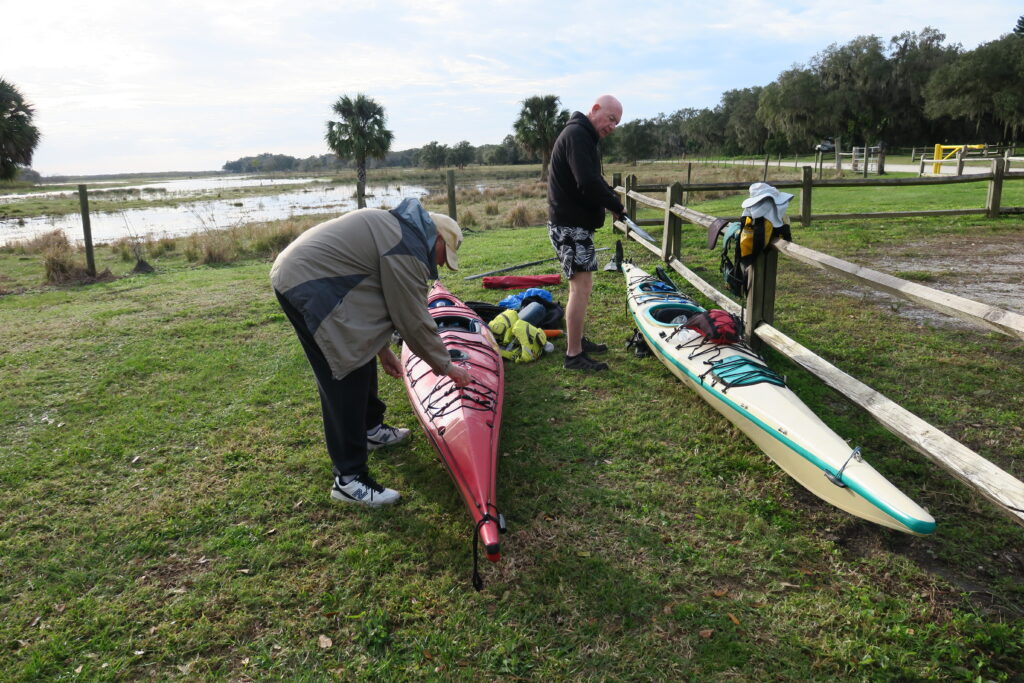
We soon launched our sea kayaks into a stiff wind on what would be a six-day journey down the historic Kissimmee River in late January of 2024. Now that a $1 billion multi-year restoration effort has been completed, re-establishing 44 miles of winding river channel, the lure of seeing the famous waterway first-hand prompted seven of us to embark together.
Several new campsites have been developed by the South Florida Water Management District in an effort to create a new Florida paddling trail. Some in my group, members of the non-profit Florida Paddling Trails Association, helped to clear those campsites and we would be the first to try them out. But first, we had to go through a lock, not a gargantuan Mississippi River-style lock. This small lock and adjacent dam, labeled S-65, is still deemed necessary for flood control for communities such as Kissimmee at the top of the interconnected Kissimmee Chain of Lakes that feeds the river.
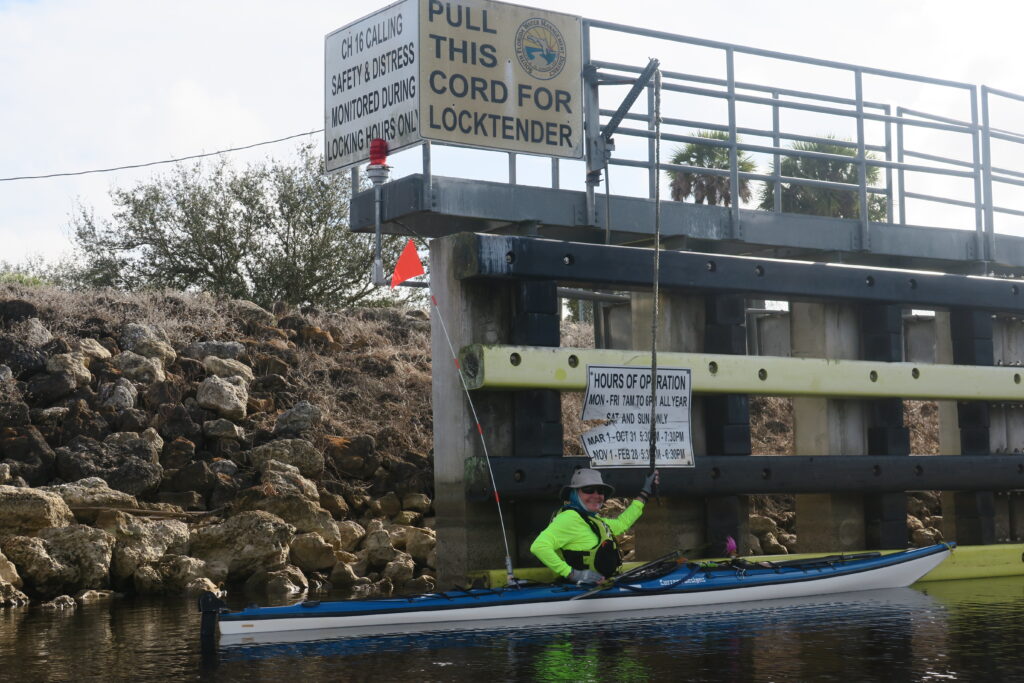
The lock tender was cheery as he took down our last names and the water level lowered about three feet. It was a process we would go through three more times before emptying into Lake Okeechobee about 80 miles later. “You are the first kayakers I’ve seen in my two years here,” he said. “There is another group coming next week,” we told him. “You will be seeing more in the coming months.”
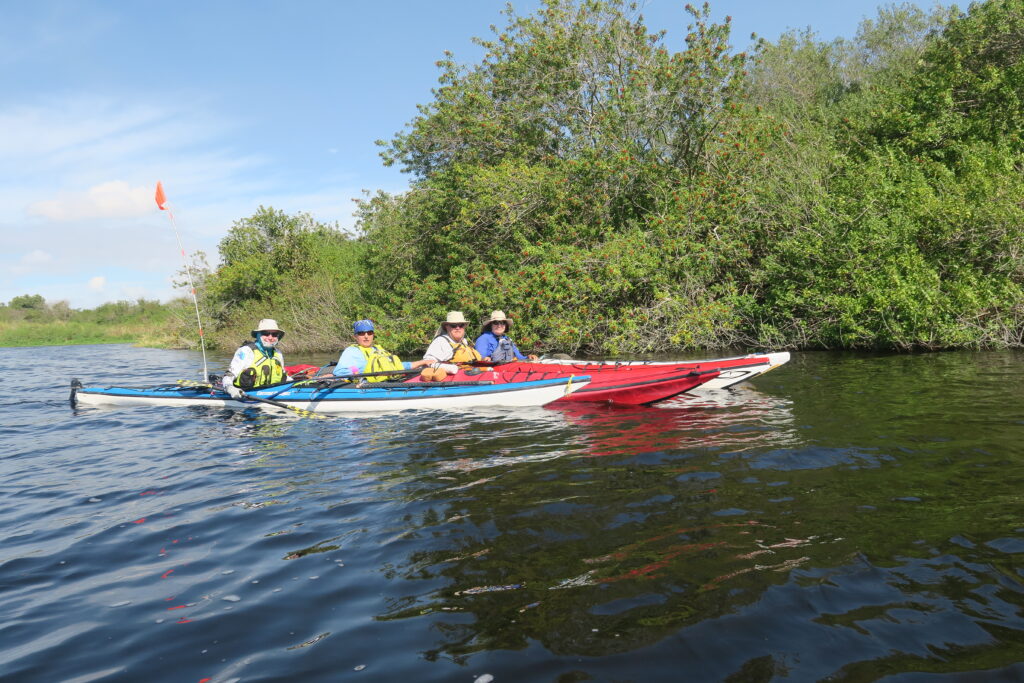
I first kayaked the Kissimmee Chain of Lakes and River in 2007 as part of a high-profile expedition that highlighted restoration efforts. The initial destruction occurred from 1962 through 1971 when the Army Corps of Engineers cut a straight ditch through the river’s heart, hoping to better control flooding in the upper system. They did their job too well. Fish, waterfowl and other wildlife drastically declined and water was no longer being filtered by a slow meandering river channel through thousands of acres of marshlands. Lake Okeechobee received too much water too quickly during the rainy season, and water quality was severely degraded.
Fortunately, in 1999, restoration of the Kissimmee River began by both the Corps and South Florida Water Management District. Two dams or “water control structures” in the middle river were removed. During our 2007 journey, 17 miles of the old river channel had been restored, but now it was almost three times that amount. Plus, 40 square miles of wetlands have been rehydrated and brought back to life. I was anxious to see the results. Even in 2007, we witnessed how wildlife in the form of alligators and wading birds were returning. With its wide marshy floodplain, the restored Kissimmee resembled a river flowing through the famous Everglades “River of Grass,” an appropriate image since this region is part of the Everglades headwaters. Some call it the Northern Everglades. Its restoration benefits the entire Everglades system.
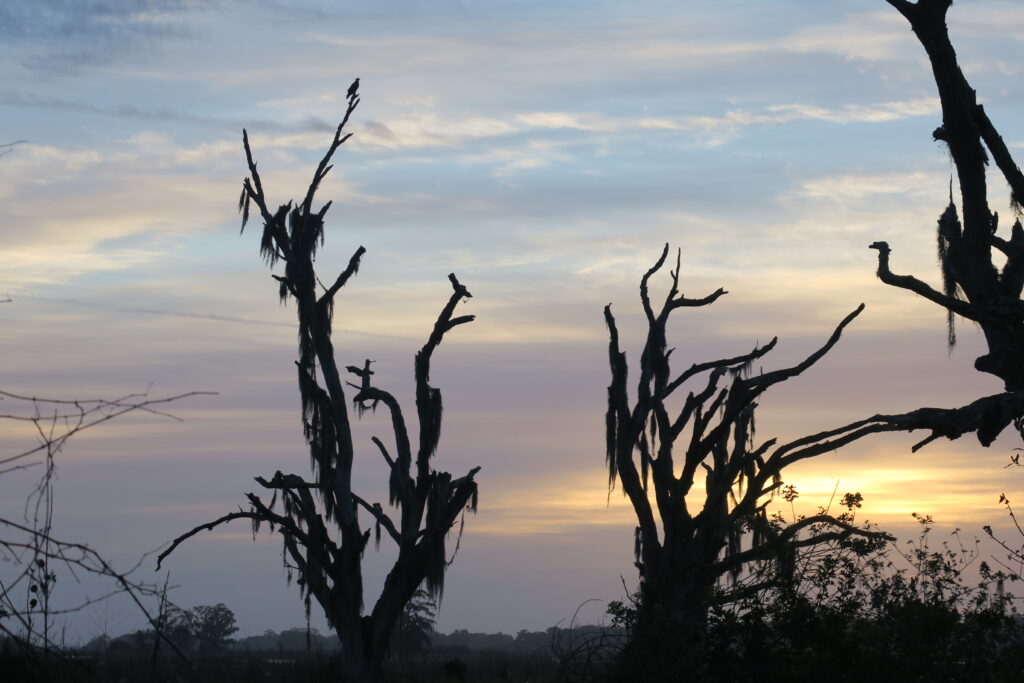
After the dam, we still had to paddle a few miles of the C-38 Canal, or the infamous Kissimmee Ditch. Thirty feet deep and 300 feet wide, it was lined with invasive Brazilian Pepper trees. “They should call this the Brazilian Pepper Ditch,” concluded Dorsey DeMaster, one of our group leaders. Some of the two-story mounds along the shore attested to the large amounts of spoil dredged to build the canal. Some bird life was still apparent, however—bald eagles, osprey, and bright pink roseate spoonbills, all favorites of birdwatchers.
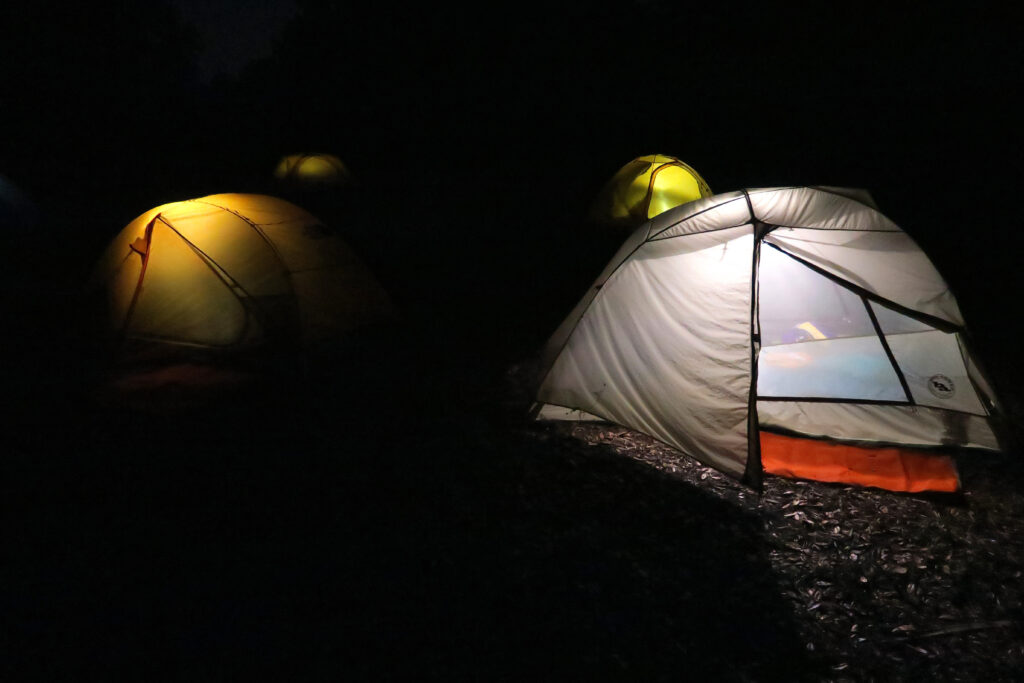
We made our way to the Town of KICCO campsite. KICCO, pronounced kee-so, was once the site of a large cattle town in the early 1900s. Once we passed through the S-65A Lock the next morning, we were soon on the wild portion of the Kissimmee River. The once slow current quickened as it coursed around sharp bends. This was a real river, and we sighed with relief. We were in wild Florida. Soon, we spotted numerous alligators crossing the channel, some exceeding ten feet in length. They submerged as we approached, seeking safety in deep water. Alligators are hunted here in late summer, so most have a fear of people.

Birds flew up from the wide floodplain—white and glossy ibis, lumbering great blue herons, red-winged blackbirds, limpkins, snowy egrets, snail kites… The Kissimmee is an ideal place for birdwatching, although sometimes challenging to pursue from a moving kayak in the wind. The restored river corridor also benefits larger animals, such as Florida panthers and black bears, which need interconnected wild lands to live and thrive. The restored floodplain stores more water for a longer period during the wet season, helping to sustain the ecosystem during the dry season while filtering pollutants and extra nitrogen.
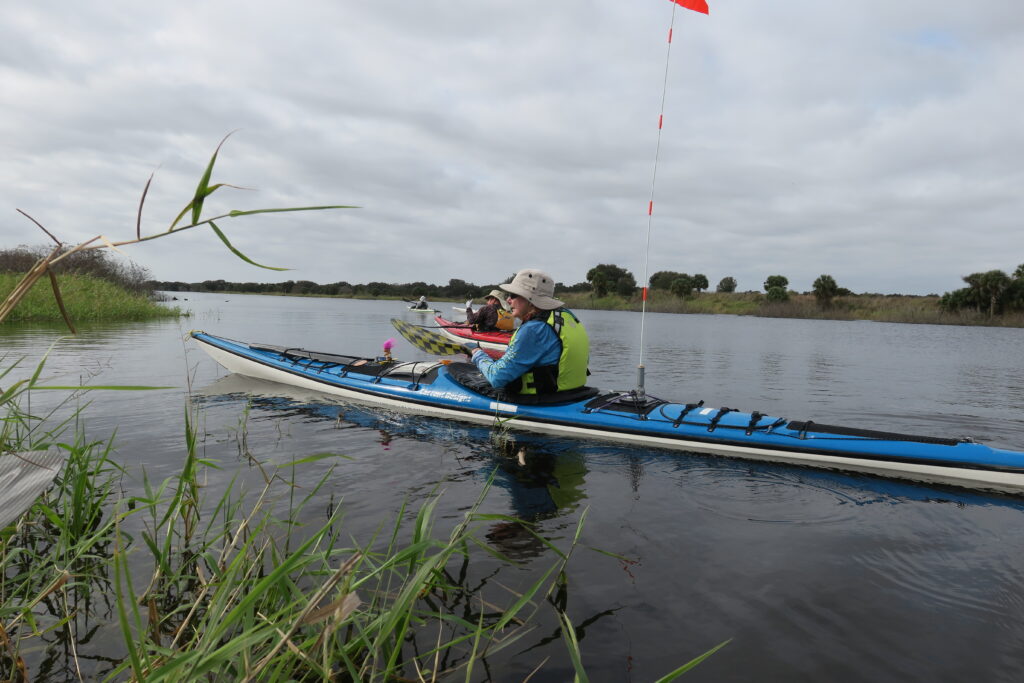
During the rest of our six-day Kissimmee adventure, we cherished our time on the 44 miles of restored river channel most of all. With the river restoration complete and campsites open, other paddlers can now experience first-hand an incomparable slice of wild Florida.
Learn More
The Florida Office of Greenways and Trails is currently working with the South Florida Water Management District in making the Kissimmee River a state-designated paddling trail, and the National Park Service is now studying the restored section of river for possible inclusion in the National Wild and Scenic River program. More information about paddling the river can be found on the Florida Paddling Trails Association website.
Information about the Kissimmee River restoration can be found on the Riverwoods Field Lab website and the South Florida Water Management District website.
Doug Alderson is the author of several award-winning books about Florida, including New Dawn for the Kissimmee River (University Press of Florida, 2009). Learn more at www.dougalderson.net.

